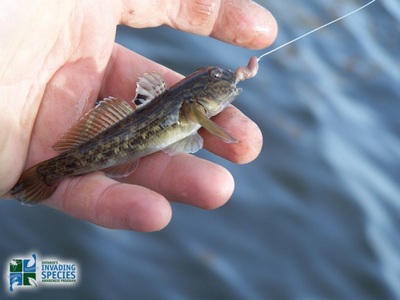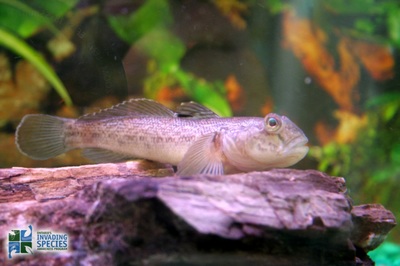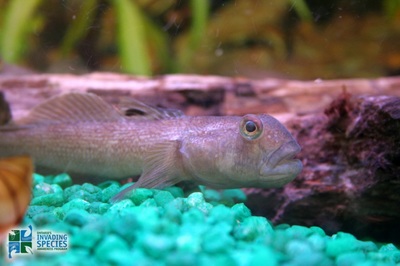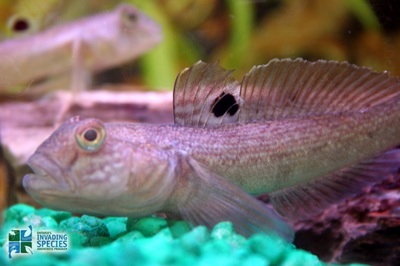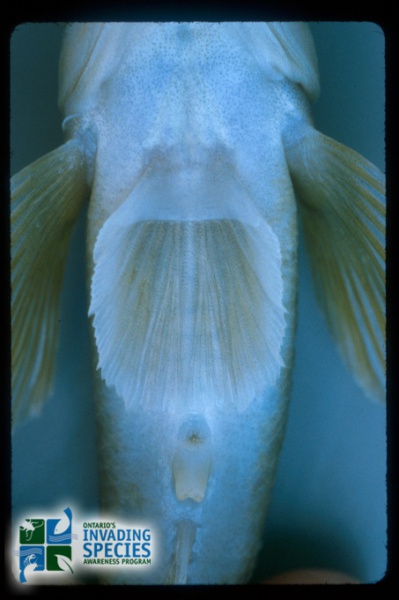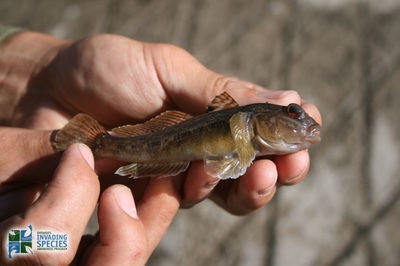Roundy Goby
|
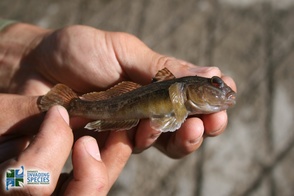
The round goby is a small, bottom-dwelling invasive fish. Native to the Black and Caspian seas in eastern Europe, it was first found in North America in 1990 in the St. Clair River north of Windsor, Ontario. Researchers believe the fish was brought to North America in the ballast water of ships from Europe. In less than a decade the round goby has successfully spread through all five Great Lakes and has begun to invade inland waters. In some areas the fish has reached densities of more than 100 fish per square metre.
The round goby prefer waters with rocky and sandy bottoms. They feed aggressively on insects and other small organisms found on lake and river bottoms. The adult round goby eats large quantities of zebra and quagga mussels, as well as small fish and fish eggs. Their aggressive eating habits and ability to spawn several times each season have helped them multiply and spread quickly.
The round goby prefer waters with rocky and sandy bottoms. They feed aggressively on insects and other small organisms found on lake and river bottoms. The adult round goby eats large quantities of zebra and quagga mussels, as well as small fish and fish eggs. Their aggressive eating habits and ability to spawn several times each season have helped them multiply and spread quickly.
Range
|
Outside its native range, the round goby has been found in all five Great Lakes and many of their tributaries, including the Illinois River. Round goby are also found in some inland waters in southern Ontario such as Lake Simcoe, the Trent River, Rice Lake, and parts of the Otonabee River.
Click here for the Early Detection & Distribution Mapping System (EDDMapS) to view and contribute to Round Goby sightings in Ontario. |
Impacts of Round Goby
|
The round goby's aggressive habits and rapid spread have had serious impacts on native species.
|
How to Identify Round Goby |
Adult round goby are six to 16 centimetres long with a cylindrical body and a rounded to blunt snout. The round goby looks similar to several species of fish found in the Great Lakes, including the invasive tubenose goby (Myoxocephalus thompsoni) and native sculpins (Cottus sp.).
|
What You Can Do |
|
OFAH/OMNR Invading Species Awareness Program. (2012). Round Goby. Retrieved from:http://www.invadingspecies.com. This factsheet may be reproduced for non-commercial purposes.

